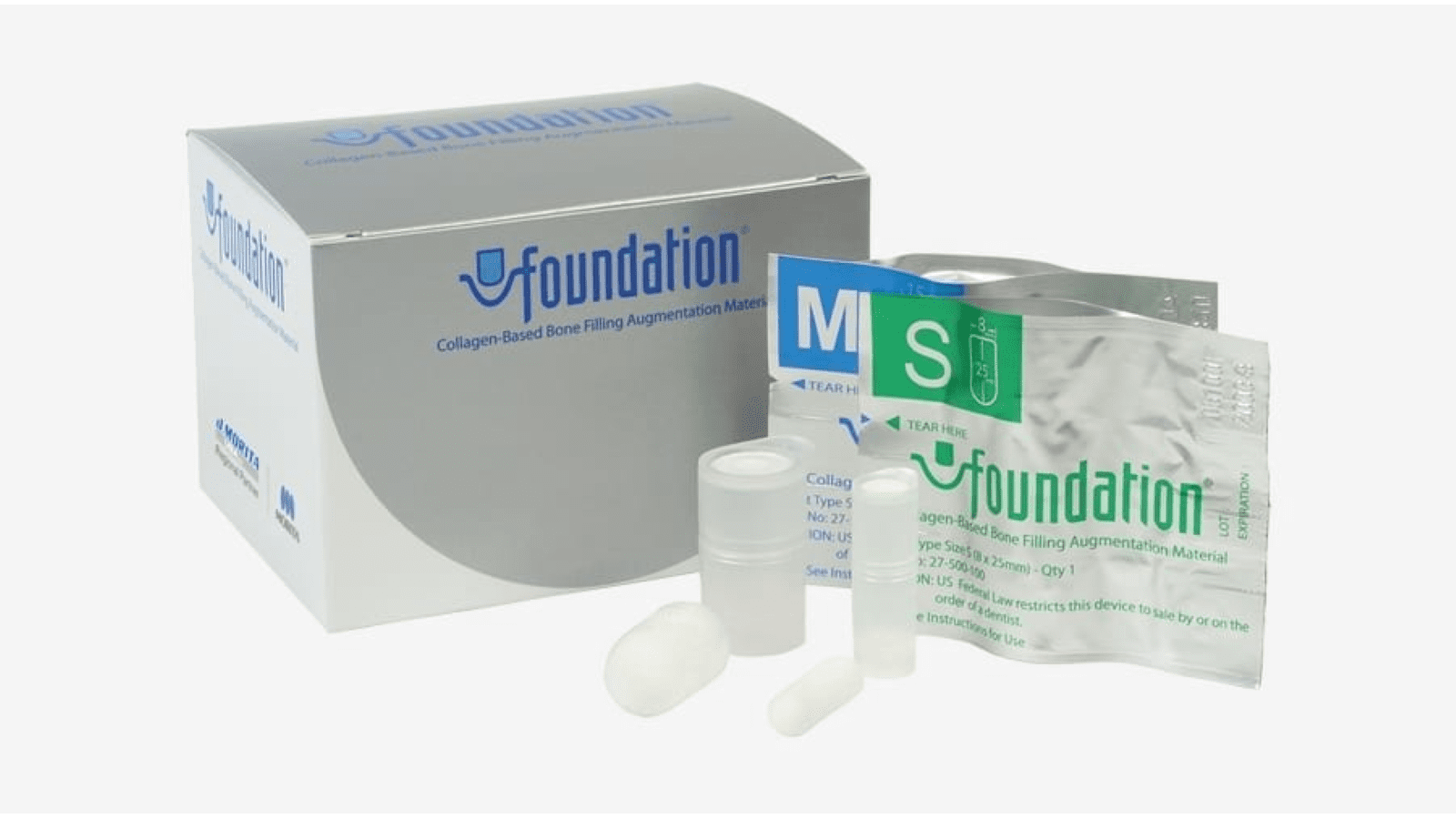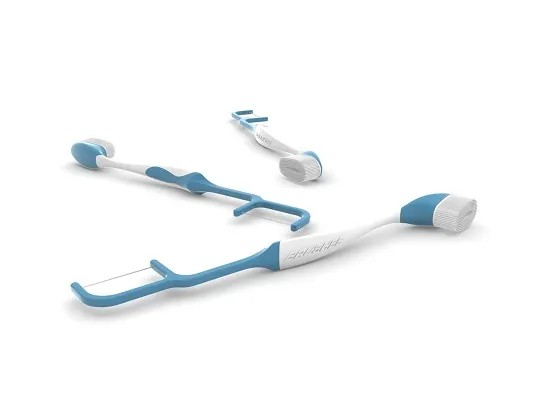Understanding How To Select Bone Grafting Materials For Your Dental Practice. Jaw bone graft options.
For dentists who treat patients with missing teeth complicated by degraded bone or slow healing, bone grafts are what make a treatment program effective. While the end goal for every restoration is the same, every patient and the treatment needs of their condition are different and may call for a different type of bone graft to get the best results. Three biological mechanisms come into play in the healing process following a graft procedure.
- Osteoconductive – Materials with this property encourage osteoblasts forming from the body to integrate with it, using it as a scaffold for the generation of new bone.
- Osteoinductive – This term describes a material that draws in cells known as mesenchymal cells to be delivered to the site by the bloodstream. These cells stimulate osteoblasts to be formed from undifferentiated osteoprogenitor cells.
- Osteogenic – This type of graft material delivers living, viable osteoblasts to the site and promote growth through the previous mechanisms as well.
Here is a table comparing the numerical data presented on the page for the top 5 bone grafting materials:
| Bone Graft Material | Success Rate | Integration Time | Resorption Time | Availability | Cost |
|---|---|---|---|---|---|
| Autograft | 95-99% | 4-6 months | 6-18 months | Limited | High |
| Allograft | 80-85% | 4-6 months | 6-18 months | Abundant | Low |
| Xenograft | 60-70% | 4-6 months | 6-18 months | Abundant | Low |
| Synthetic | 60-70% | 6-12 months | 12-24 months | Abundant | Medium |
| Composite | Varies | Varies | Varies | Varies | Varies |
Note: The numerical data presented here is based on the information provided on the page and may vary depending on individual patient factors and the specific type and source of bone graft material used. The availability and cost may also vary based on location and other factors.
Each form of bone graft material has one or more of these properties and will play a part in determining which one will be the best choice for the treatment at hand. There are four primary categories of bone grafts, each describing the origin of a given sample of bone graft material.
- Autograft – Bone drawn from the patient’s own tissue is known as an autograft. Autografts are pieces of bone that are transferred from one location in the patient’s body to another and are the preferred choice due to there being no chance of disease or rejection.
- Autograft Properties:
- Osteoconductive, Osteoinductive, Osteogenic
- Allograft – Allograft bones are similar to autograft in that they are drawn from human tissue. The difference lies in that allografts are drawn from a cadaver donor. While generally considered safe, there is some concern that transmitting disease through these graft materials may be possible.
- Allograft Properties:
- Osteoconductive, osteoinductive
- Xenograft – In cases where an autograft is impossible and an allograft is unavailable or undesired, a xenograft is possible. Xenografts use bone material from a non-human source, typically from bovines and porcine sources, that has been depleted of all protein and minerals. Bovines are known for their durability and longevity.
- Xenograft Properties:
- Osteoconductive
- Alloplast is made from entirely synthetic materials, eliminating any risk of transmitting disease. The most common bone material used in the manufacture of alloplastic is hydroxyapatite (HA). This material is the primary structural component in bone and is favored due to its abundant availability and reliability.
- Alloplast Properties:
- Osteoconductive
When selecting a source for a bone graft that isn’t the patient themselves, it’s important to find a reputable source for the material. We referenced respected sources in the dental industry to provide a list of sources that have a solid reputation for delivering safe and effective bone graft materials you can rely on.
5 Best Dental Bone Graft Brands for Sinus Lifts, Ridge Augmentation and Pre-Implant Grafts
| Bone Graft Material | Type | Source | Advantages | Disadvantages |
|---|---|---|---|---|
| Autograft | Natural | Patient’s own bone | High success rate, minimal risk of disease transmission or immune response | Requires a second surgical site, limited supply, postoperative pain |
| Allograft | Natural | Donor’s bone | No second surgical site, ample supply, can be used in large quantities | Slightly lower success rate than autograft, risk of disease transmission or immune response |
| Xenograft | Natural | Animal bone (usually bovine) | No second surgical site, ample supply, can be used in large quantities | Slightly lower success rate than autograft, risk of disease transmission or immune response |
| Synthetic | Artificial | Man-made materials (e.g. hydroxyapatite, tricalcium phosphate) | No risk of disease transmission or immune response, customizable to fit patient needs | May not integrate with natural bone as well as natural materials, limited long-term data |
| Composite | Combination | Mix of two or more materials (e.g. allograft and synthetic) | Can combine advantages of different materials, customizable to fit patient needs | May be more expensive, more complex surgical procedure |
Note: The advantages and disadvantages listed here are not exhaustive and may vary depending on the specific material and individual patient factors.
Top 10 Bone Management Products for Dentists
1. HeliMend Collagen Membrane by Integra Miltex
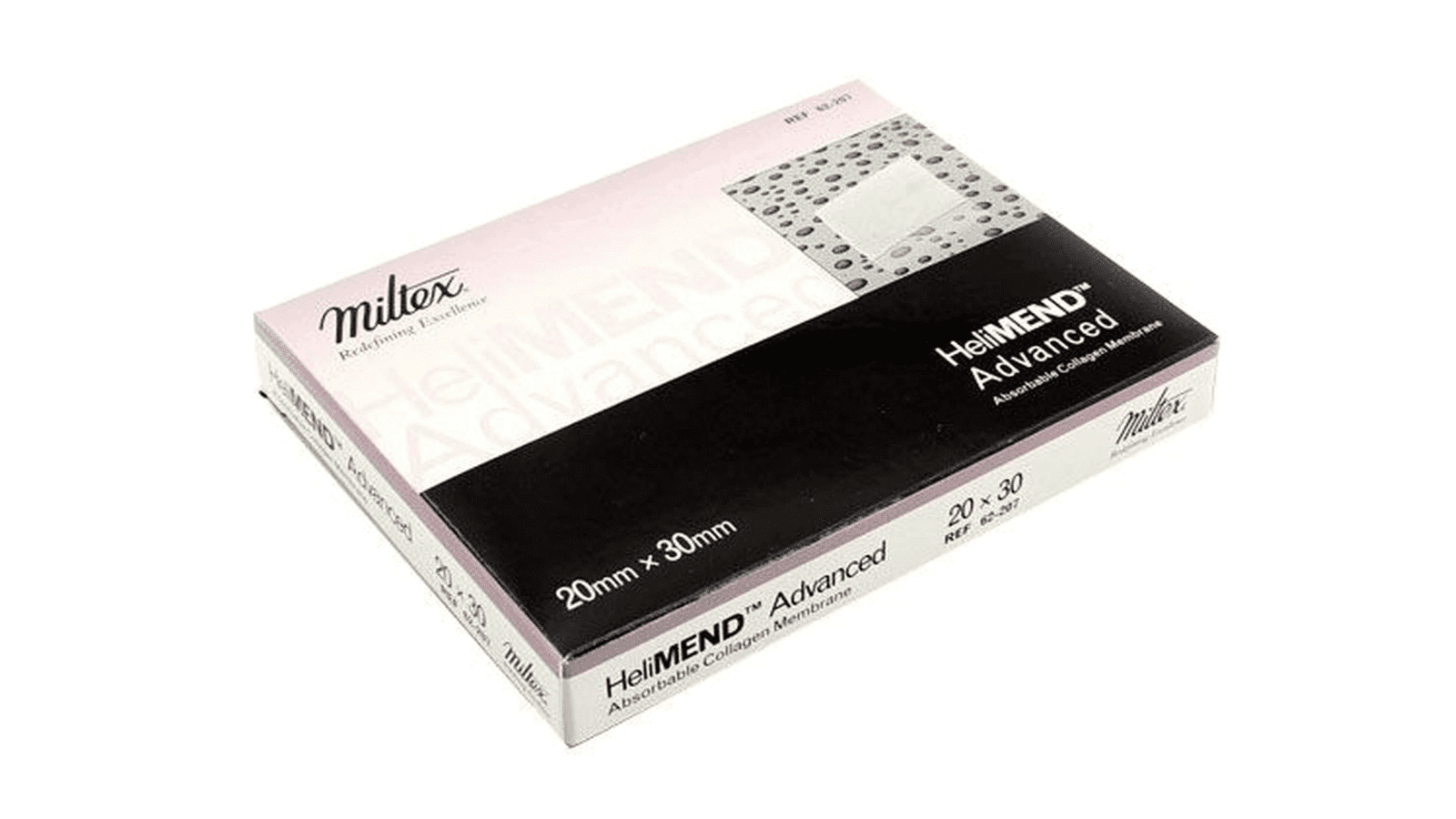
Product Description
HeliMend Collagen Membranes are resorbable barriers used for guided tissue regeneration in dental and surgical procedures. Made from purified bovine tendon collagen, these membranes provide essential wound stabilization and support during the healing process. Absorbed naturally within 4 to 8 weeks, they offer dependable space maintenance and bleed control in grafting procedures.
Product Overview
Designed to be pliable, sterile, and easy to place, HeliMend membranes are ideal for clinicians seeking effective barrier support in ridge preservation, periodontal surgery, and socket grafting. The membrane offers excellent biocompatibility and handling characteristics, making it a practical option in soft tissue management.
Key Features
- Made from purified bovine tendon collagen
- Fully resorbable within 4–8 weeks
- Provides wound stabilization and space maintenance
- Pliable, sterile, and easy to handle
- Offers excellent bleed control and tissue compatibility
- Ideal for guided tissue and bone regeneration
Common Applications
- Ridge preservation procedures
- Periodontal surgery
- Socket grafting
- Guided bone and tissue regeneration
- Soft tissue management in implantology
Technical Specifications
Product Name: HeliMend Collagen Membrane
Brand: HeliMend
Manufacturer Name: Integra Miltex
Material: Purified bovine tendon collagen
Absorption Time: 4 to 8 weeks
Sterility: Yes (sterile packaged)
Form: Pliable membrane
Package Quantity: Varies by size
Customer Ratings
Rating: 5.0 out of 5 (Based on 13 verified reviews on Net32)
Customer Feedback
Clinicians report excellent handling and ease of placement. Many praise its predictable resorption time and reliability in wound stabilization. Users note it performs well even in complex grafting procedures.
Customer Pricing
Net32 Price: $73.95
Top 10 Bone Regeneration Materials for Dental Surgery and Periodontal Use
2. R.T.R Syringe Resorbable Tissue Replacement by Septodont
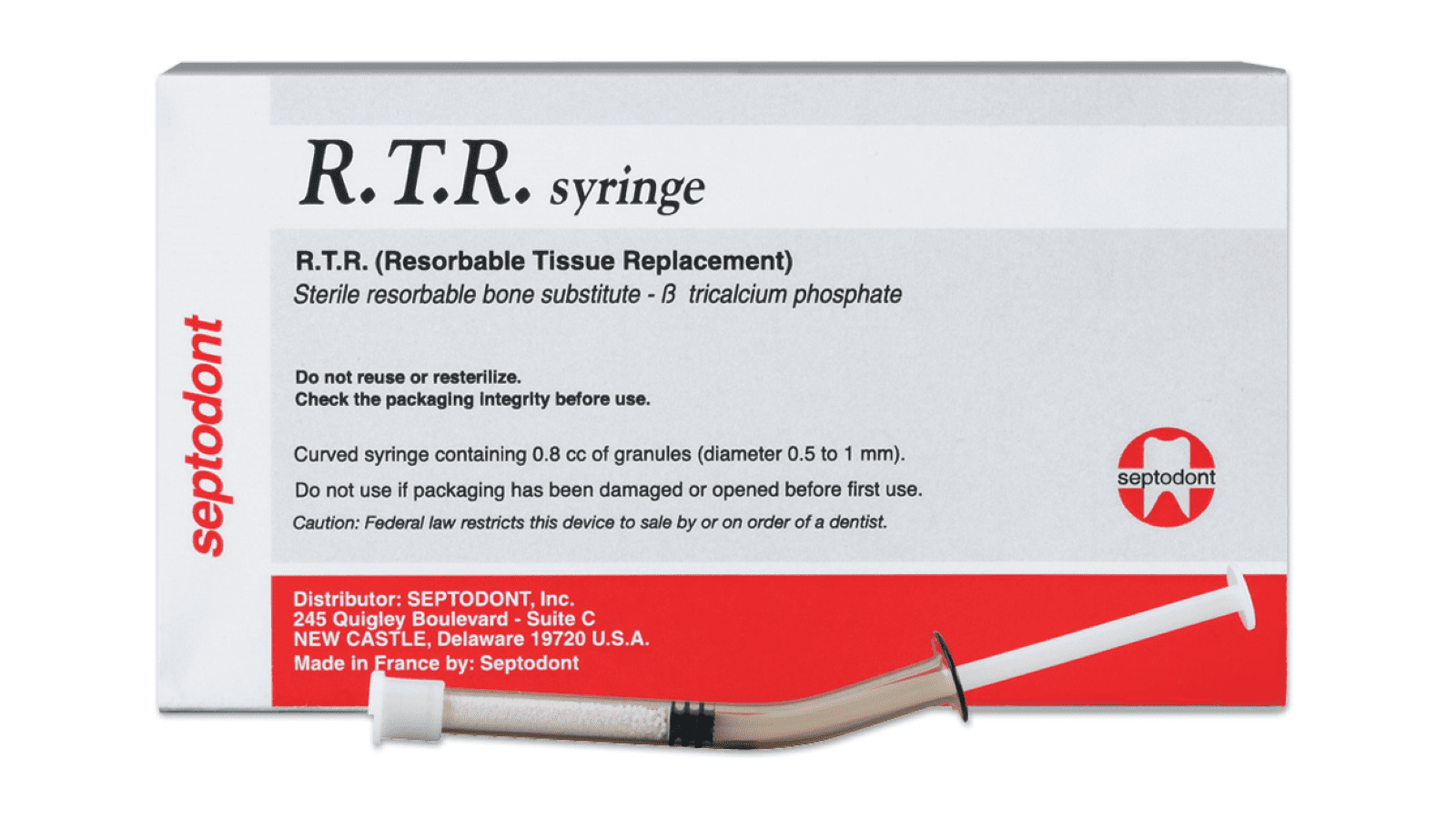
Product Description
R.T.R Syringe Resorbable Tissue Replacement by Septodont is a sterile, resorbable bone substitute designed to simplify grafting procedures. Packaged in syringe form, it allows for precise, clean application, reducing procedural mess while promoting predictable outcomes in bone regeneration.
Product Overview
This tissue replacement product contains tricalcium phosphate granules that release calcium and phosphate to aid in new bone formation within 3–6 months. Its osteoconductive structure supports the integration of bone by interacting with the bone’s natural micro- and macropores. Designed for sinus lifts, intrabony defects, and other regenerative procedures, the R.T.R Syringe ensures both handling ease and reliable biological performance.
Key Features
- Convenient syringe delivery form
- Sterile and resorbable bone substitute
- Releases calcium and phosphate to promote bone regeneration
- Osteoconductive structure for integration into natural bone matrix
- Promotes regeneration within 3–6 months
- Ideal for sinus lift and intrabony defect treatments
Common Applications
- Sinus lift procedures
- Treatment of intrabony periodontal defects
- Ridge augmentation
- Bone regeneration in implantology
Technical Specifications
Product Name: R.T.R Syringe Resorbable Tissue Replacement
Brand: Septodont
Composition: Tricalcium phosphate granules
Form: Syringe delivery
Sterility: Sterile
Resorption Time: 3–6 months
Structure: Osteoconductive
Packaging: 1 Syringe
Country of Origin: Not specified
Customer Ratings
Rating: 4.3 out of 5 (Based on 3 reviews)
Customer Feedback
- Easy to use and apply
- Effective results in bone growth
- Reduced procedural mess
Customer Pricing
Net32 Price: $93.00
3. Foundation Bone Filling Material by Morita
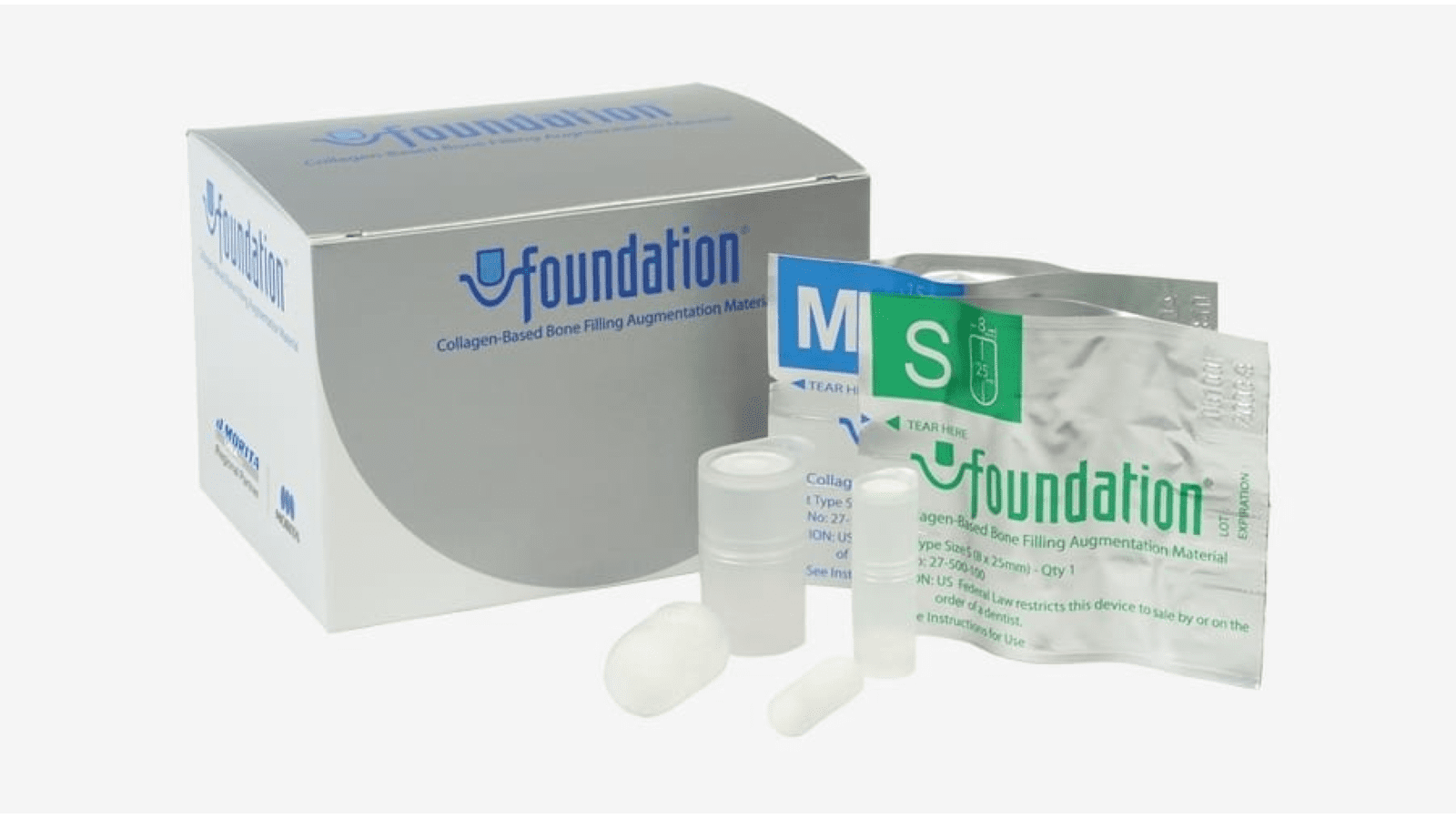
Product Description
Foundation Bone Filling Material by Morita is a collagen-based bovine bone grafting material designed to support socket preservation and promote new bone formation following tooth extractions. It helps prepare the site for future placement of implants, bridges, or dentures.
Product Overview
This material integrates naturally with surrounding tissue, releasing calcium and phosphate to stimulate bone regeneration. Within 8–12 weeks, the extraction site is typically replaced with new bone. The cone-shaped form can be trimmed to fit the socket precisely, allowing for easy and immediate placement without additional preparation.
Key Features
- Collagen-based bovine bone material
- Releases calcium and phosphate to promote bone growth
- Facilitates socket preservation and bone regeneration
- New bone forms within 8–12 weeks
- Cone-shaped design can be trimmed for a better anatomical fit
- Supports implants, bridges, and denture placement
Common Applications
- Socket preservation after tooth extraction
- Pre-implant site development
- Ridge preservation
- Support for prosthetics such as bridges and dentures
Technical Specifications
Product Name: Foundation Bone Filling Material
Brand: Morita
Material: Collagen-based bovine bone
Resorption/Healing Time: 8–12 weeks
Form: Cone-shaped graft
Trim to Fit: Yes
Sterility: Sterile
Packaging: Single unit
Country of Origin: Not specified
Customer Ratings
Rating: 4.6 out of 5 (Based on 16 reviews)
Customer Feedback
- Reliable healing and bone regeneration
- Easy to use and shape
- Excellent for socket preservation
Customer Pricing
Net32 Price: $336.60
4. Mineralized 5.0cc Bone Granules by Veragraft™

Product Description
Mineralized 5.0cc Bone Granules by Veragraft™ are allograft bone particles formulated to provide optimal space maintenance and promote natural bone remodeling. This mineralized cortico-cancellous blend is ideal for a variety of regenerative procedures and integrates well with the host bone within 4 to 6 months.
Product Overview
Veragraft’s mineralized particulate promotes osteoconduction, allowing the graft material to serve as a scaffold for new bone growth. The cortico-cancellous composition offers both structure and porosity, making it an effective solution for grafting applications such as sinus lifts, ridge preservation, and periodontal regeneration. The material is designed to support long healing windows and serve as a reliable alternative to mixed allografts.
Key Features
- Mineralized allograft with cortico-cancellous bone mixture
- Osteoconductive properties for reliable integration
- Maintains volume and space over extended healing periods
- Supports new bone growth within 4 to 6 months
- Ready-to-use granules for clinical convenience
- Alternative to traditional mixed particulate allografts
Common Applications
- Sinus graft procedures
- Periodontal defect treatment
- Ridge preservation after extraction
- Implant site preparation
- Bone regeneration in oral and maxillofacial surgeries
Technical Specifications
Product Name: Mineralized Bone Granules
Brand: Veragraft™
Material: Mineralized allograft (cortico-cancellous blend)
Volume: 5.0cc
Osteoconductive: Yes
Resorption/Healing Time: 4–6 months
Packaging: Single unit
Sterility: Sterile
Application: Grafting and regenerative procedures
Customer Ratings
Rating: 4.7 out of 5 (Based on 21 reviews)
Customer Feedback
- Easy to handle and apply
- Excellent results with sinus and periodontal grafts
- Consistently reliable for maintaining graft volume
Customer Pricing
Net32 Price: $209.95
5. InterOss Organic Cancellous Granules by SigmaGraft
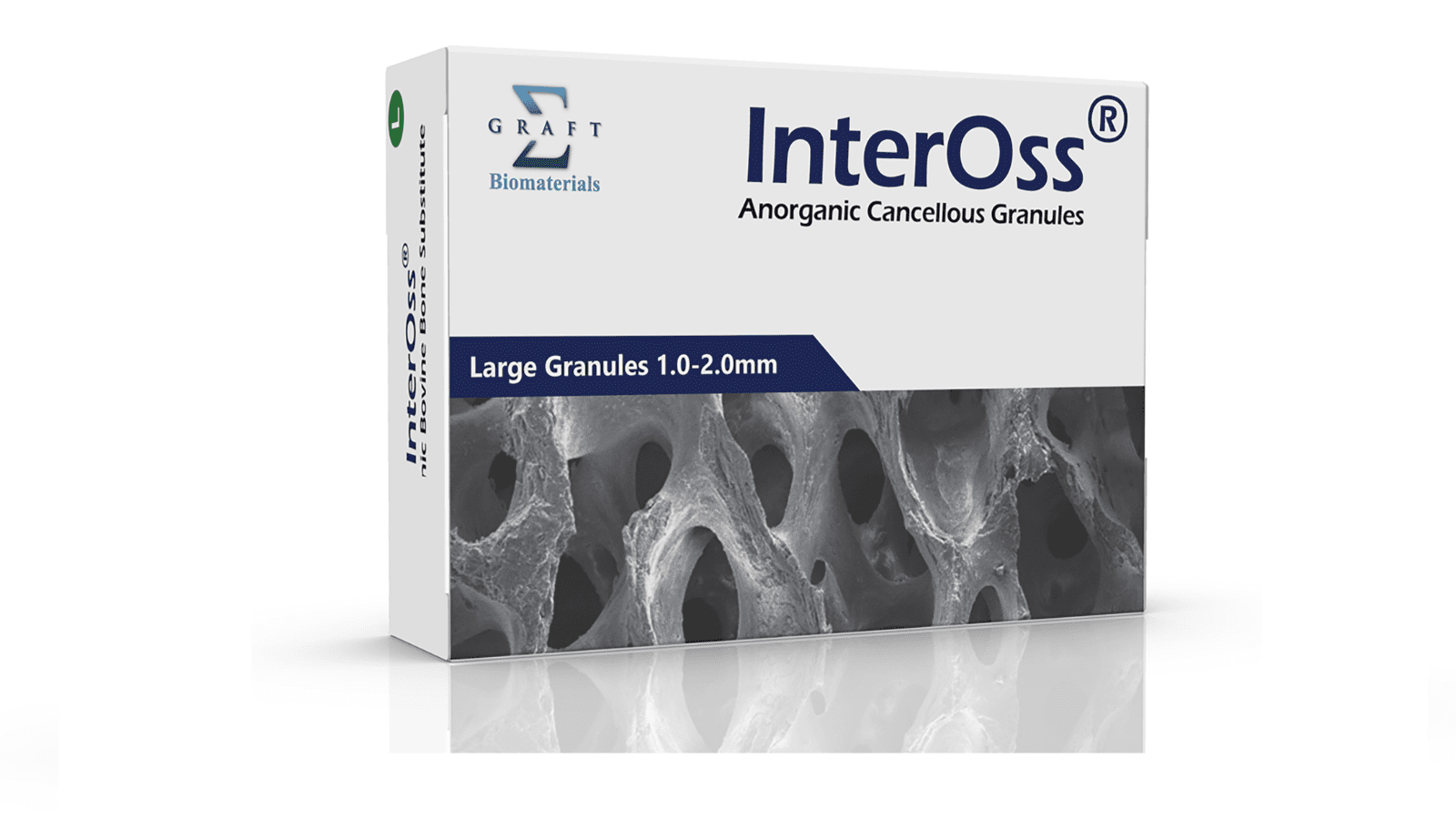
InterOss Organic Cancellous Granules by SigmaGraft
InterOss is a hydroxyapatite-based bone grafting material derived from Australian bovine bone. Designed for superior osteoconductive performance, this organic cancellous granule mimics human bone in structure and composition. Its dual macroporous and microporous architecture facilitates fluid and cell infiltration, guiding the natural regeneration process in a controlled and stable manner.
Product Overview
InterOss offers long-term structural integrity and is sterilized using gamma radiation to ensure safety and longevity. Its high biocompatibility makes it ideal for various dental surgical procedures requiring bone regeneration. The granules are designed to allow body fluids like bone marrow and blood vessels to permeate, supporting the formation of new bone.
Key Features
- Hydroxyapatite derived from Australian bovine bone
- Macroporous and microporous structure for guided healing
- Osteoconductive and chemically similar to human bone
- Gamma-sterilized for long-term stability
- Supports vascularization and new bone formation
- Suitable for multiple bone regeneration procedures
Common Applications
- Tooth extraction sites
- Periodontal defect repair
- Sinus lift procedures
- Ridge augmentation
- Implant site development
Technical Specifications
Product Name: InterOss Organic Cancellous Granules
Brand: SigmaGraft
Material Type: Hydroxyapatite (Bovine derived)
Structure: Macroporous and Microporous
Sterilization Method: Gamma radiation
Osteoconductive: Yes
Resorbable: Gradual over time
Country of Origin: Australia (raw material)
Package Quantity: Varies
Net32 Price: $285.00
Customer Feedback
- Awaiting published reviews or feedback data.
Bone graft book on Amazon*

Bone grafting requires materials made for the job that aren’t affected by fluids and bone structures, and as a dentist, your products are what help make your practice grow. For quick supplies, Integra Miltex’s HeliMend and Helimend Advanced membranes will provide you with the bone graft material you need in a pinch. However, for high quality and assurance, we recommend the Veragraft line of products for its variety of granule sizes and consistencies.
